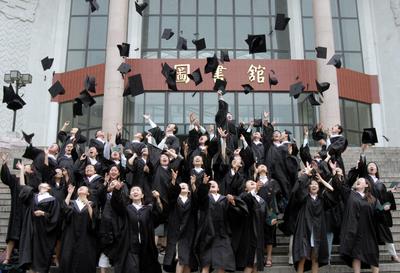Yet, quite apart from navigating stagnation in the old industrial world over the next few years, Asia also faces some longer term risks to high growth performance. One that is now prominently discussed is the risk of growth petering out, caught in the ‘middle-income trap’ before advanced country levels of per capita income are attained.
‘The middle-income trap’ is an idea that derives from the experience of a host of emerging economies that looked as if they were on the road to high-income status but did not really make it. Stagnation in growth rates occurred before they were able to progress from being a middle-income country to a high-income country. Industrial ‘catch-up’ might be difficult for many countries, but it is the easy part compared with effecting the transition to a per capita income of, say, US$10,000 (Malaysia’s per capita income in exchange rate converted terms or US$15,000 in purchasing power parity terms) and to over US$60,000 (Australia’s). As economies become wealthier and the technology they need to apply more sophisticated, they lose the advantages of ‘starting from behind’. They need to be capable of operating closer to the technological frontier and compete further up the value chain.
The idea is straightforward enough. The risk is real. The recent report on China’s economic prospect from the World Bank and China’s Development Research Centre reveals that only 13 of the 101 countries deemed to be middle-income countries in 1960 had achieved high-income levels in 2011. Some parts of Asia, including some ASEAN economies, appear to be caught in the ‘middle-income trap’.
What is not so clear is what the cause of growth petering out has been. There’s a burst of research on that subject around the world right now.
Two things clearly play an important role: failure to invest in the human capital that is necessary to take income to a higher level; and failure to reform institutions and governance so that they support an adaptive and creative economy and society. Where reforms stall and the structure and growth of human capital is inadequate, there is a risk that Asia’s emerging economies, even China, might fall into the ‘middle-income trap’. As Asian economies approach the technological frontier, the role of the state has to shift from direct government intervention to support industrial development and adoption or adaptation of existing technologies largely from abroad, toward the provision of public goods and services, and supporting the development the human knowledge and skills base and the functioning of well-regulated, open and transparent private markets. Governments in Asia will need to create an environment in which dynamism and investment will flourish, there is improved institutional performance and there is the required investment in human capital and infrastructure. Success or failure will determine whether strong growth in the region will continue over the longer haul.
In this week’s lead essay, Emmanuel Jimenez and Elizabeth King from the World Bank identify the scale and structure of investment as the key to Asia’s continuing long-term growth.
‘In the decades since, some East Asian economies have seen sustained growth, especially between the early 1960s and 1990s. The growth of the so-called East Asian Tigers — Hong Kong SAR (China), Singapore, South Korea and Taiwan (China) — was built on astute investments in schooling and training and enhanced by a demographic dividend made possible through falling fertility rates. The demographic dividend meant that when young people became workers they not only had more schooling but they also had fewer dependents to support’, Jimenez and King argue. ‘The demographic window of opportunity does not last forever and, in fact, middle-age bulge is rapidly becoming an old-age spread in the region’s more advanced countries, such as Japan‘.
During the coming decade, in China for example, more of the gains in productivity that will be needed to continue to drive high growth will not only have to be drawn from technology absorption and adaptation, but they will need to be supplemented by incremental innovation. By 2030, China expects to have pulled abreast technologically of the most advanced countries. If it is to do that, in that year China will need to have up to 200 million college graduates — more than the entire workforce of the United States. This will require a massive lift in the quality and scale of investment in education at all levels. Financing and managing this investment will require a different order of public investment and, deploying the talent, an entirely different structure of economic and social incentives that can only be delivered through deep economic and political reform.
Many Asian societies are noted for their commitment to improving the quality of their education, and already have some of the highest educational attainments in the world. Yet the fiscal and institutional challenges to lifting educational performance in the way that is needed to sustain economic growth is another thing altogether. The success or failure in that will be a major determinant of whether Asia fulfils the expectations of its long-term economic growth.
Peter Drysdale is Editor of the East Asia Forum.

